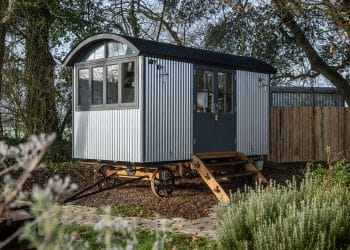Table of Contents
The tiny house movement was a social shift that attracted many because it promoted simple, economical living at a time of heightened commercialism. It encouraged people to live within their means, be sustainable, and experience freedom from materialism by focusing on what’s important.
For people who wanted to grow a sizable nest egg and avoid real estate debt, transitioning to a tiny home was both welcome and exciting.
Then came the coronavirus pandemic. The fast-spreading virus brought unprecedented challenges to American households, and more so for people living in tiny homes. Suddenly, living with “just enough” is no longer feasible as cities and states issued orders for the public to stay at home.
No Place to Park for Mobile Homes
Tiny home enthusiasts may be classified between settlers and travelers. Settlers practice minimalism and take advantage of public services like electricity, water, and sewage systems. Travelers take tiny living a step further by indulging their wanderlust. In their tiny, mobile home, they can travel the country without missing out on the comforts of home.
Unfortunately, public lands have started closing because of the pandemic. If the statisticians’ and medical experts’ recommendations are to be followed, the shelter-in-place orders will likely continue for a more extended period.
Trailer owners now need to find land where they can park long term, consider getting back on the grid, and even build a metal fence around the yard – the epitome of putting down roots – for their health, safety, and compliance.
Limited Space for Food and Supplies
Everything is scaled down in a tiny home, especially storage. Most tiny houses, for example, have small refrigerators that can only hold enough food for a week. This is fine under normal circumstances, but frequent grocery shopping trips are neither safe nor practical in a pandemic. The alternative is to stock up on non-perishables, but it still doesn’t solve the problem of limited storage. It even compounds the problem if you factor in non-food supplies.
Tiny Living Space
One of the appeals of tiny home living is it encourages people to expand their living spaces to the outdoors. It teaches people that they can be minimalists in their homes because they have the rest of the world to move around in. When you’re free to move around outside, a house that’s only six steps wide is charming; but when you’re cooped inside 24/7, it could start to feel claustrophobic.
The Ideal Set-Up for Tiny Homes
How can tiny house owners improve their situation during the coronavirus pandemic? Here’s a picture of an ideal set-up for tiny home living:
Whether mobile or single-family detached, the best spot for a tiny house would be a sizable plot of land with trees and shrubs offering privacy. Homeowners have free rein over the place, so they can set up an outdoor living or dining space. Trees and shrubs surround the property (and a permanent, aluminum fence wouldn’t hurt, either) can give residents privacy. Even better if the soil is suitable for gardening: homeowners can be sustainable and grow food so they can limit their grocery shopping.
The pandemic is bringing to light concerns that have been overlooked in the past. For tiny home owners, this is a period of re-evaluation. Are they financially, mentally, psychologically, and physically equipped for tiny house living? We will know the answer in the next few months.







